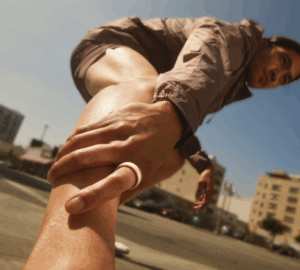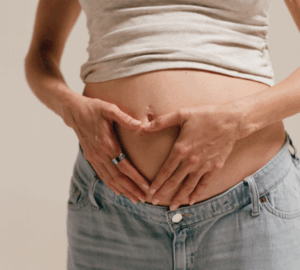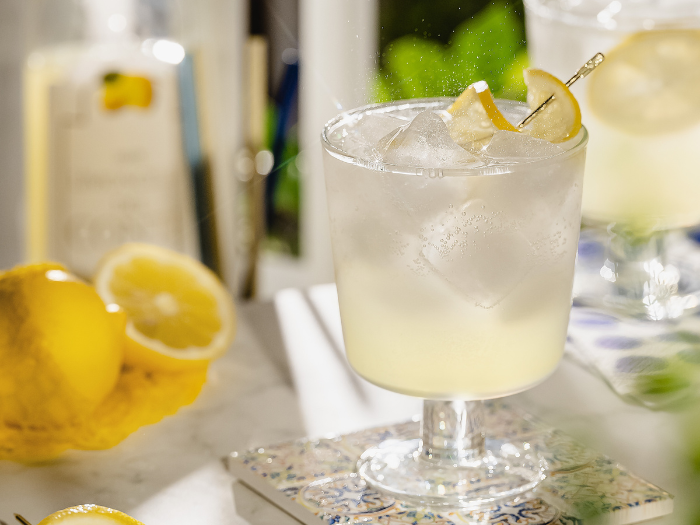In the Oura community, we often hear from members who are cutting back on alcohol and reaping the many health benefits—from improved HRV to more restful sleep. Drinking less (or eliminating) alcohol is a proven path to better health with plenty of research showing the wide range of advantages, including more energy, better skin, less anxiety, improved immunity, and more.
But for many of us, reaching for a drink at the end of a long workday or at a social event has become a hard-wired habit. That’s why having delicious, alcohol-free alternatives to reach for can make it easier to cut back on drinking. It helps you fulfill that daily habit of “having a drink” after work or with dinner, and it also makes it easier to socialize with something tasty in hand. And no more FOMO: Having your favorite mocktail at the ready when your friends are sipping cocktails makes you feel like you’re not missing out. (In fact, you’ll be gaining a much better morning than them!)
Keep reading for more tips to on your journey to drinking less, plus seven satisfying mocktail recipes—many of which come with added health benefits!
| Member Tip: Conduct your own self-experiment to see how your sleep is impacted by alcohol. Tag whenever you drink alcohol, and use the Trends view to compare it to days that you don’t. |
3 Smart Strategies to Drink Less
- Share your goal with friends. Whether it’s a long-term plan or a month-long goal, telling your friends about it can help to absolve any awkwardness or social pressure when you deny a drink on a night out.
- Plan ahead and envision your success. Research shows that people tend to get better results when they envision their success. Being optimistic, combined with a clear plan, can be a great path to success. If you’re heading to a social event, prepare ahead of time with a non-alcoholic drink and a response at the ready if people ask questions as to why you’re not drinking.
- Explore new social activities and hobbies. There are endless alternatives to grabbing a drink with a friend! Go for a coffee, take a cooking class, head out for a hike, or try a new workout class with your friends. In fact, you might find that taking alcohol out of the equation helps you create more meaningful connections.
| Member Story: Oura member Gemma R. gave up alcohol after a January challenge, and enjoyed seeing the improvements in her Oura data – including a drop in her resting heart rate from 90 bpm to 55 bpm. |
READ MORE: Sober Curious? 6 Proven Strategies to Drink Less
7 Non-Alcoholic Drink Recipes
The following recipes are sourced from Locke Hughes, Oura’s Head of Health Content and author of Melatonin: The Natural Supplement for Better Sleep and Hilary Sheinbaum, founder of GoingDry.co and author of The Dry Challenge: How to Lose the Booze for Dry January, Sober October, and Any Other Alcohol-Free Month.
1. Tart Cherry-Lime Soda
If you’re on TikTok, you’ve probably seen the viral version of this drink called the ‘Sleepy Girl Mocktail.’ “That’s an apt description, since tart cherry juice has been shown to help you sleep better,” says Hughes. “Plus, making your own simple syrup reduces the sugar you need, creating a balanced drink that’s not overly sweet.”

Serves 2
Ingredients
- 2 cups tart cherry juice
- ¼ cup granulated sugar
- 1 lime, zested and juiced
- Seltzer water
- Lime wedges
Instructions
Combine the cherry juice, sugar, lime zest and juice in a medium saucepan over medium heat. Bring mixture to a boil, then lower heat to simmer. Let mixture thicken slightly, 15-20 minutes. Pour the syrup into a glass jar or bottle and let cool to room temperature.
Pour 1 tablespoon of the syrup into a highball glass. Fill the glass with ice, then top with seltzer water and a lime wedge. Drink immediately.
Store extra syrup in an airtight container in the fridge for up to 2 weeks.
READ MORE: 8 Foods and Drinks For Better Sleep (And 4 To Avoid!)
2. French ’89
“A twist on the classic French 75, I make the French ‘89 (yes, I named it after Taylor Swift) to wow friends and party guests,” says Sheinbaum.
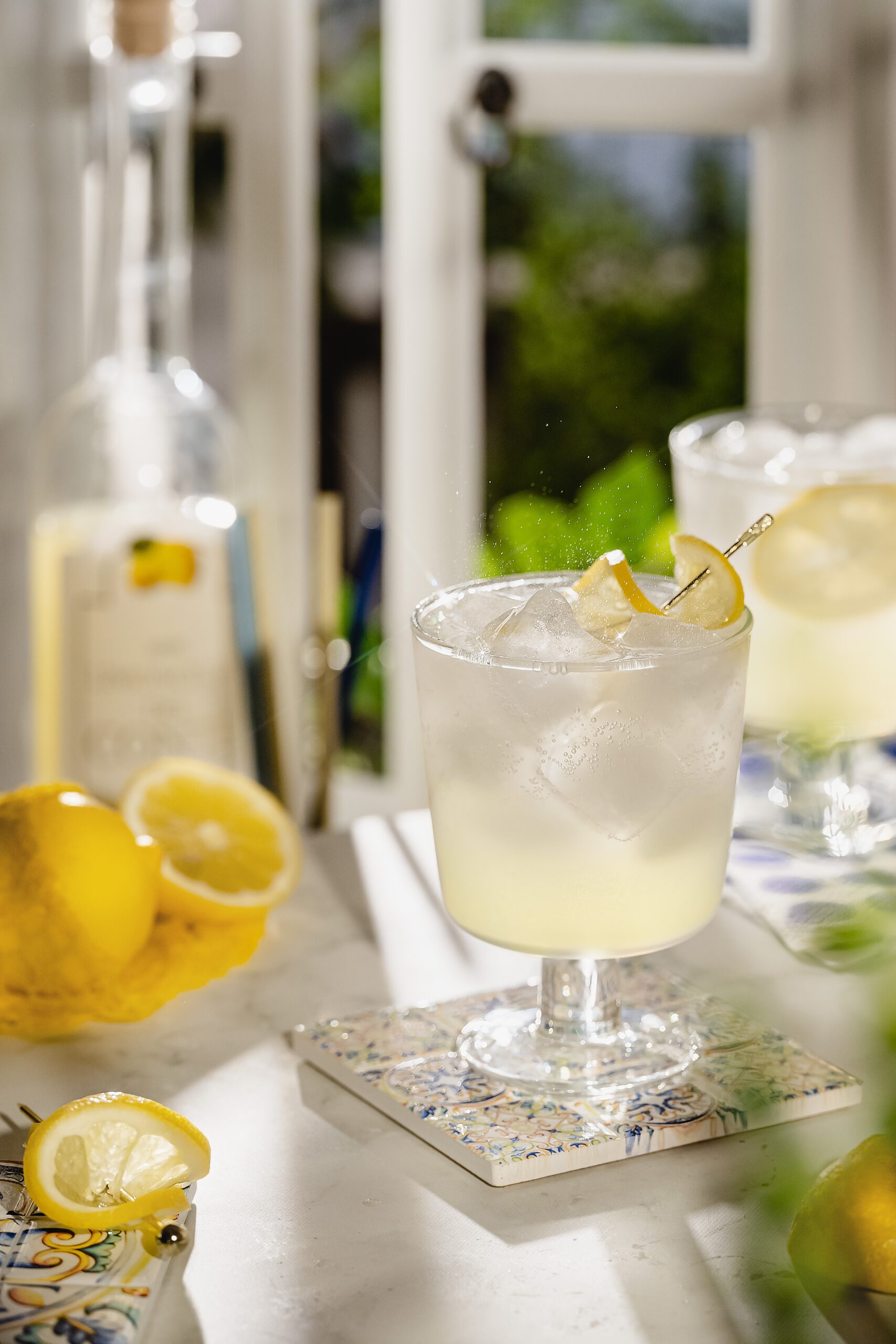
Ingredients
- 1 ounce Damrak 0.0 Gin
- 1/4 ounce simple syrup
- 1/4 ounce lemon juice
- 3 oz. chilled alcohol-removed sparkling white wine
- Lemon peel
Instructions
Add all ingredients together in a glass and stir. Garnish with lemon peel.
3. Iced Minty Passion Fruit Cooler
This caffeine-free iced tea combines the sweetness of passion fruit with a refreshing hit of mint, says Hughes. It’s an alcohol-free take on a classic tropical cocktail, perfect for a hot summer day.
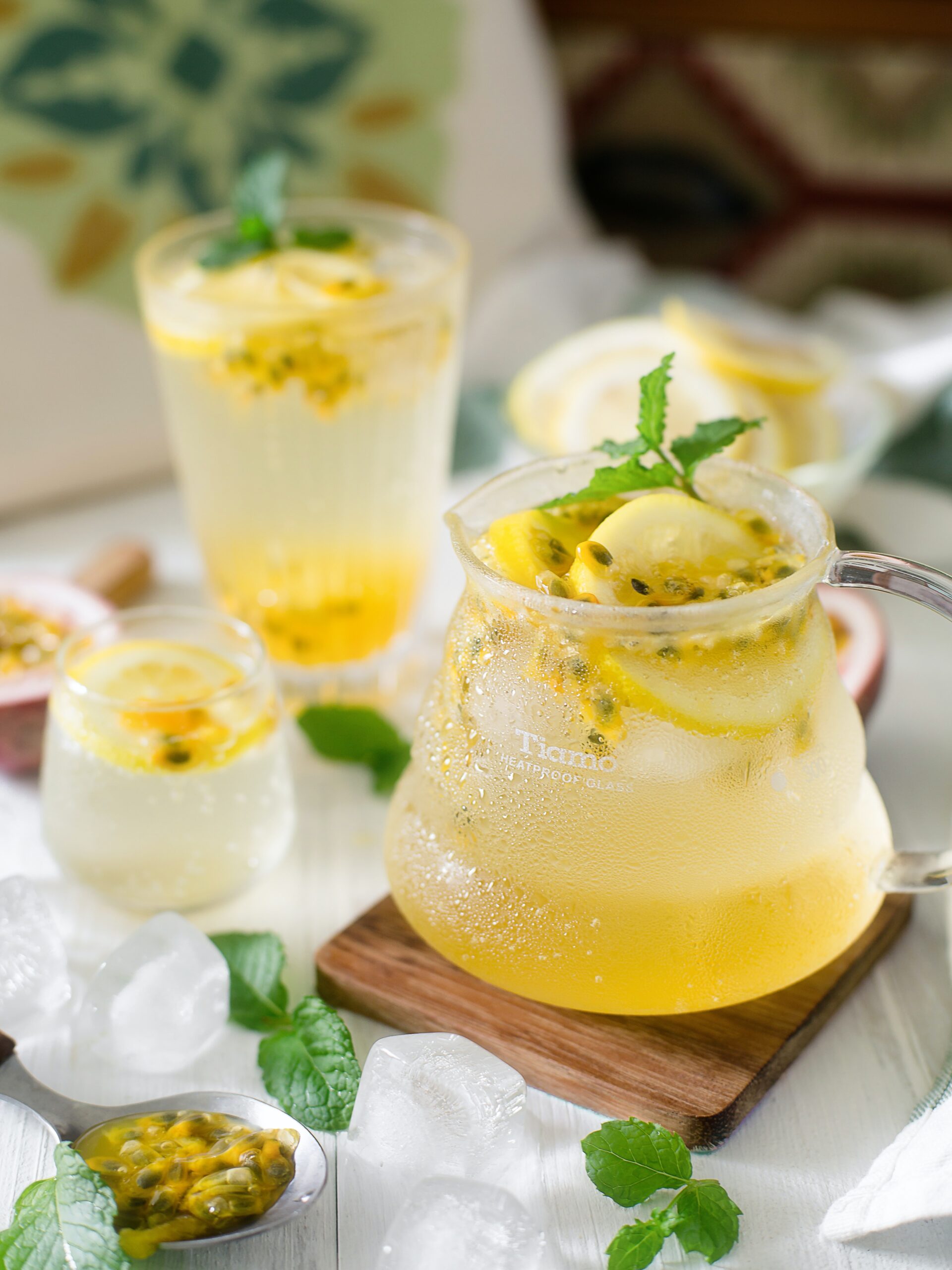
Serves 2
Ingredients
- 2 bags peppermint tea
- 2 bags passion fruit tea
- Juice of ½ lemon
- 2 tablespoons honey
- Ice
Instructions
Bring 4 cups of water to boil. Pour into a large liquid measuring cup or pitcher with the peppermint and passion fruit tea bags and steep for 5 minutes. Remove passion fruit tea bags and steep for another 5 minutes. Transfer mixture to the refrigerator and cool for at least 2 hours.
After mixture has cooled, stir in the lemon juice and honey. Serve in highball glasses over ice, option to add in passion fruit for decoration.
4. Orange Tonic
There are two ways to make this tasty drink, depending on the time of day. Try it with chamomile tea to help you fall asleep at night, or go for lemon tea to give you a boost of energy during the day, suggests Hughes.
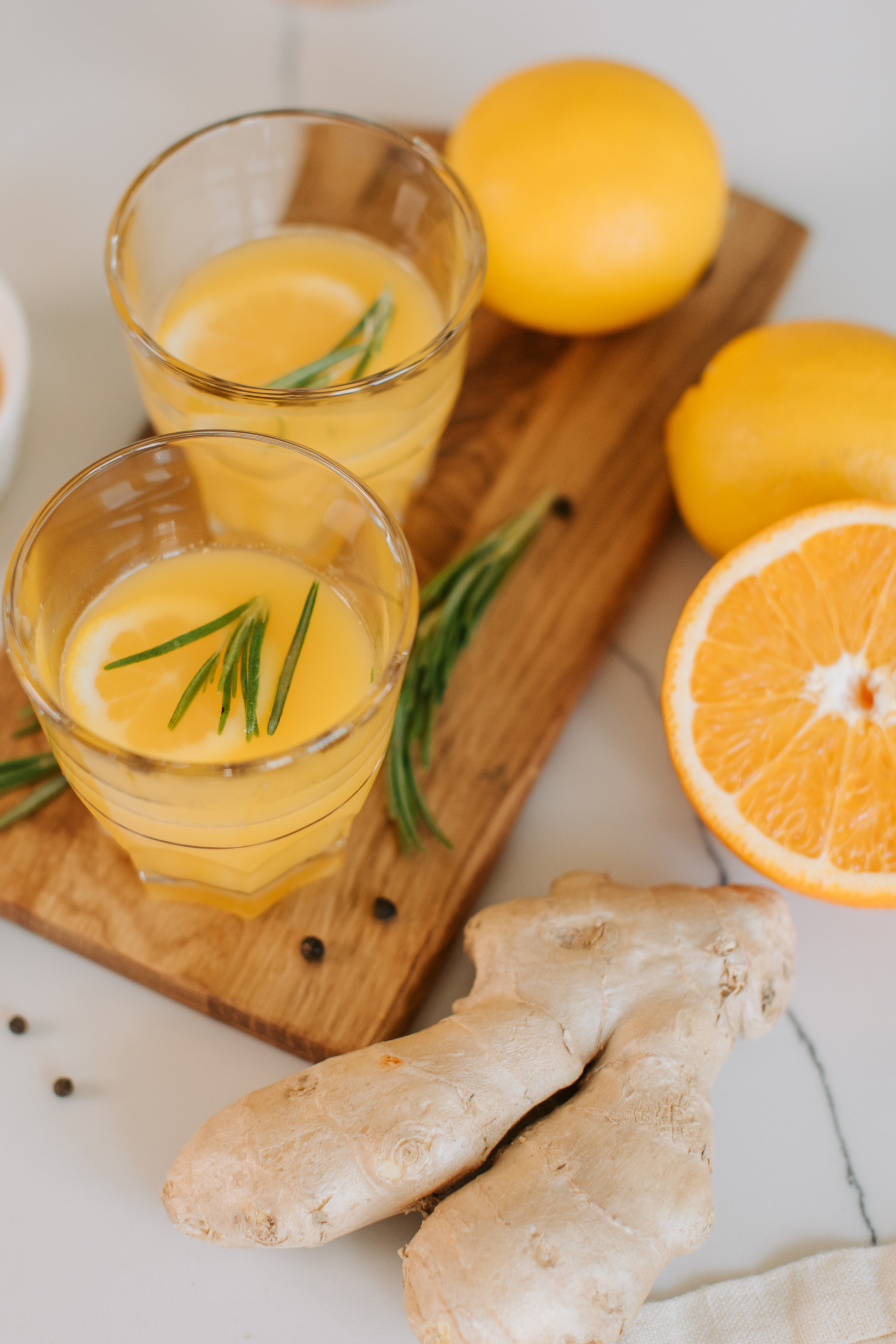 Serves 2
Serves 2
Ingredients
- 2 chamomile tea bags
- Juice from 2 oranges
- ¼ cup carrot juice
- 2 teaspoons freshly grated ginger
- Seltzer
- Ice
- Lemon slices
Preparation
Bring ½ cup of water to a boil. Pour into a large liquid measuring cup or pitcher with the chamomile tea bags and steep for 5 minutes. Remove tea bags and let cool completely in the refrigerator, for at least 2 hours.
When tea is cooled, whisk in orange juice, carrot juice, and ginger.
Fill two highball glasses with ice. Divide tea mixture between glasses and top with a float of seltzer. Garnish with lemon slices and drink immediately.
5. A Celebratory Spritz
“For a celebratory occasion, I recommend Giesen 0% Sparkling Brut,” Sheinbaum says. “This recipe is essentially a mock Aperol Spritz, which is delicious any time of year, but especially on a warm day.”
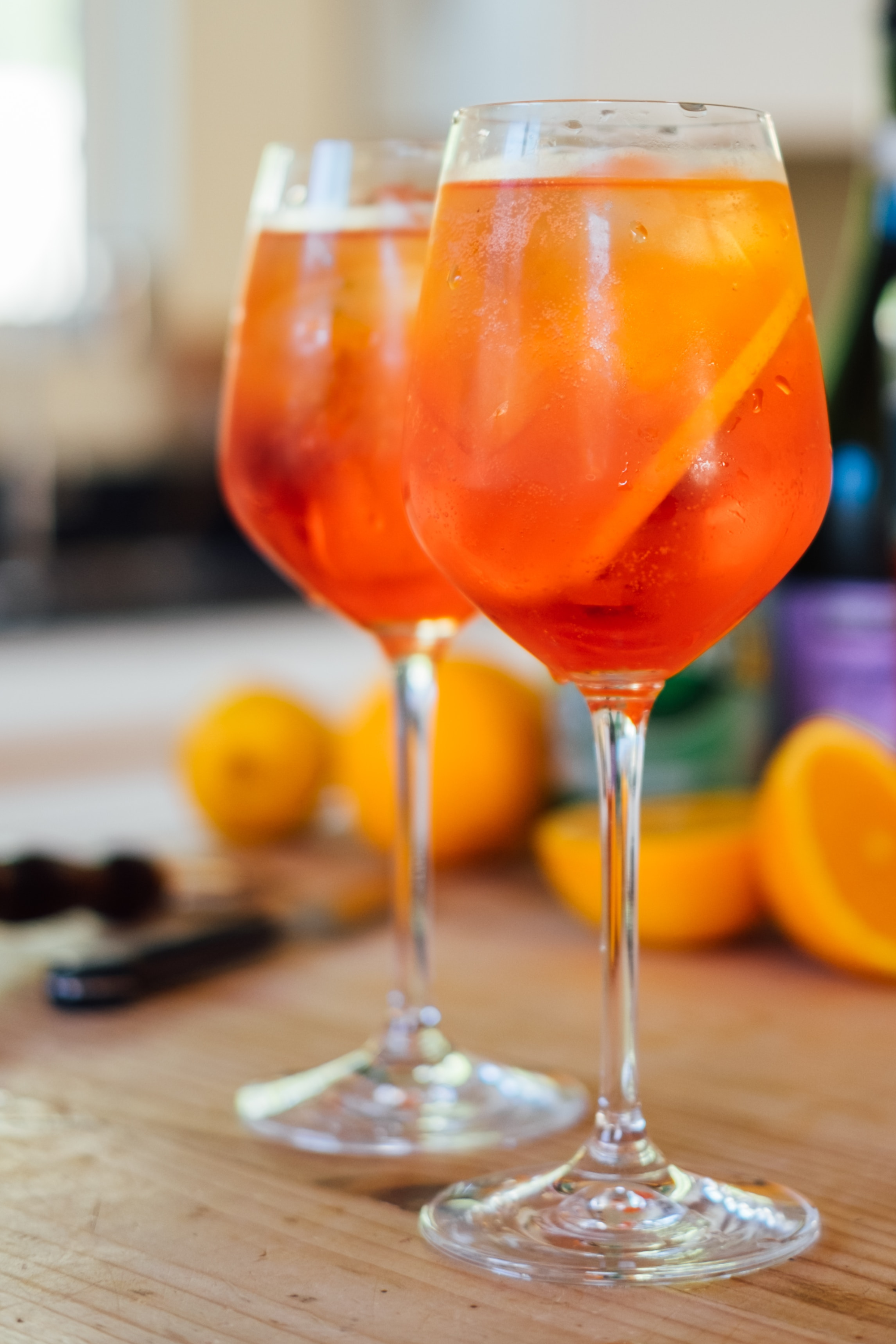
Ingredients
- Ice
- 1 ounce seltzer water
- 2 ounces Free Spirits: The Spirit of Milano
- 3 ounces Giesen 0% Sparkling Brut
- Orange peel
Instructions
Add all ingredients into a glass in order of listed ingredients and stir. Garnish with an orange peel.
6. Alcohol-Free Paloma
The perfect summer adult beverage gets a makeover with Sheinbaum’s alcohol-free Paloma recipe featuring a touch of smoked agave flavor.
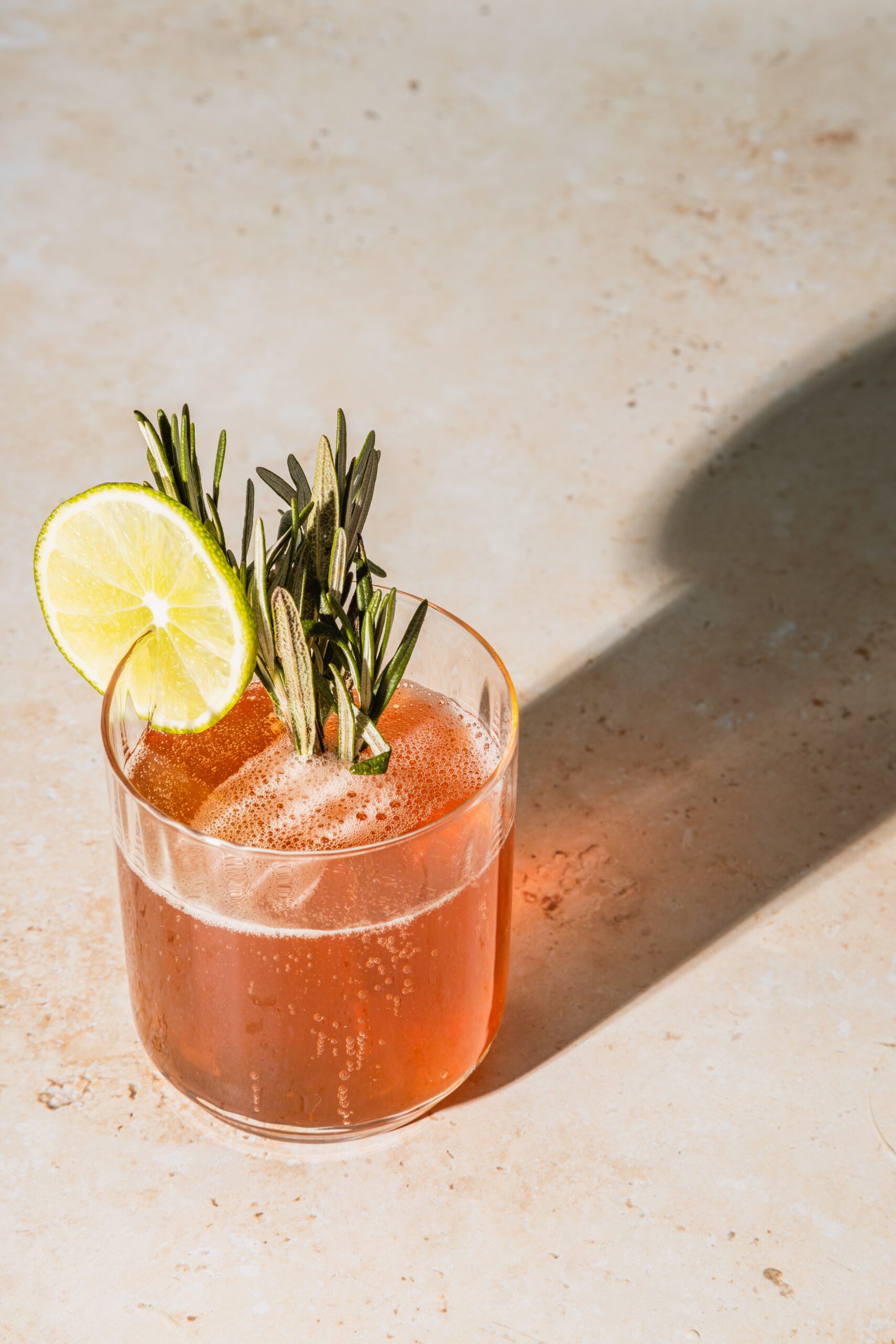
Ingredients
- 1 part FLUÉRE Smoked Agave
- 1 part fresh grapefruit juice
- Seltzer water
- Lime
Instructions
Stir Smoked Agave and grapefruit juice together. Add a splash of seltzer water and a squeeze of lime. Garnish with lime wedge.
7. Winter Warmer Tea
“This immune-boosting tea is the perfect after-dinner drink, sans alcohol,” Hughes says. With freshly grated ginger and soothing honey, this enhanced chamomile tea keeps you warm while helping you sleep more soundly.
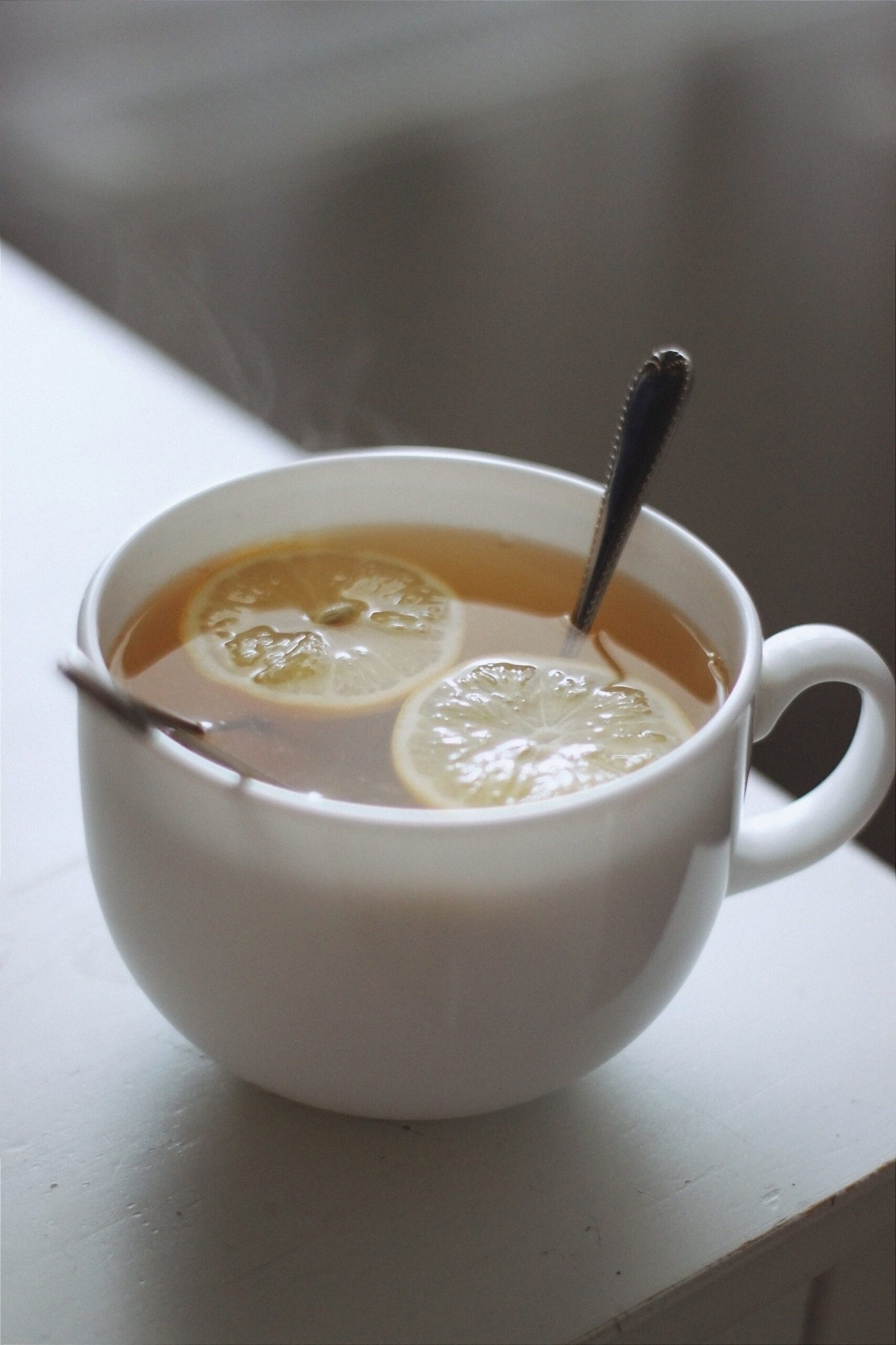
Serves 2
Ingredients
- 2 chamomile tea bags
- 1 teaspoon freshly grated ginger
- 1 lemon, zested and juiced
- 2 teaspoons honey
Instructions
Bring 2 cups of water to a boil. Divide the water between two mugs with chamomile tea bags and let steep for 5 minutes. Remove the tea bags and set aside to cool slightly.
In a small bowl, combine the ginger, lemon juice and zest, and honey. Stir half of the mixture into each mug. Drink immediately.
LEARN MORE: How Does Alcohol Impact Oura Members?






